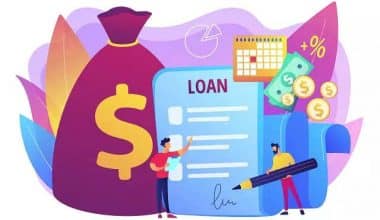If a homeowner can’t make their mortgage payments, they may be able to get a loan modification, which can help them out financially in the long run. It could mean switching to a loan with better terms, getting a lower interest rate, or even getting a whole new loan. This article discusses loan modification lawyer, their requirements, and their types.
How Does a Loan Modification Work?
When you modify a mortgage, you can add late fees to the principal and switch from an adjustable-rate loan to a fixed-rate loan. There is no limit to the kinds of loans that can be changed, but mortgages are the most common ones that do.
You can talk to your lender about a loan modification at any time during the foreclosure process or the settlement phase. If a lender comes to this conclusion, it means that it would be more expensive for the company to foreclose or write off the debt than to change the loan.
Loan Modification Initiatives
Here are some options for re-financing debt;
#1. Conventional Loan Modification
Those with traditional mortgages can use the Flex Modification program to lower their monthly payments by up to 20%, extend the length of their loan by up to 40 years, and maybe even lower their interest rate.
#2. FHA Loan Modification
Borrowers with an FHA loan have many ways to change their loans, such as getting a loan without interest for up to 30% of the total amount. If the borrower sells or refinances the property, the interest-free loan is paid back along with the balance. In light of the global epidemic, people who have FHA loans can refinance at a lower rate and cut their payments by at least 25%. FHA borrowers can now choose loan terms of up to 40 years.
This gives them more freedom if they want to lower their monthly payments by that much but can’t do so with a normal 30-year loan.
#3. VA Loan Modification
With a VA loan, the borrower and lender can work out a new payment plan that takes the missed payments into account but still lets the borrower pay on time. Another choice is to extend the loan term.
#4. USDA Loan Modification
Customers with USDA-backed loans may be able to make changes to their mortgages, such as extending the length of the loan by up to 40 years, lowering the interest rate, and getting a “mortgage recovery advance,” which is a lump sum payment to bring the loan up to date.
Because of these actions, both the principal debt and the cost of interest will go up. If your income drops in a way that can’t be fixed, you might want to sell your home and move to a smaller, cheaper one or rent.
Loan Modification Lawyer
The most common type of loan that needs to be changed is a mortgage, usually, because the homeowner can’t keep up with payments. A loan modification lawyer’s job is to talk to the lender about new ways to pay back the loan.
If you have an attorney talk to the lender on your behalf, you have a better chance of getting a loan modification that will help your finances.
What a lawyer for a loan modification does
A lawyer can help with the loan modification process in a number of ways. One way is by giving legal advice. This means giving the following:
#1. Avoid Foreclosures
With the help of a lawyer who specializes in loan modifications, it is often possible to keep your home from going into foreclosure. A lawyer who specializes in loan modifications might be able to convince the lender to stop the foreclosure process so that the borrower and the lender can come to an agreement.
This would save everyone time and money. An order to show cause could be filed by a lawyer to stop the foreclosure process. You could also help the borrower file for bankruptcy, which would stop any further proceedings.
#2. Putting More Focus on Each Person
Loan servicers are often criticized by borrowers for not answering the phone or taking a long time to get back to them when they do. During the mortgage crisis that began in the new millennium, many banks and credit unions got a lot of calls and emails from borrowers who were in trouble. A lawyer who specializes in changing loans can make their services fit the needs of each client.
#3. Concede to Lenders
In a loan modification lawsuit, a lawyer can negotiate better terms with the lender. Loan modification lawyers know how to aid underwater debtors.
#4. Instructions on How to Fill Out Forms
Most of the time, changing a loan means a lot of paperwork. Borrowers who need help with the application should talk to a lawyer who has experience with loan modifications. He or she can also help applicants get the necessary paperwork. And he or she might be able to tell the lender how bad the borrower’s finances are. Because of this, the case is often put in the best possible light.
Loan Modification Requirements
Before a borrower can ask for a change to their loan, they must have missed at least three mortgage payments. Loan modifications may be available to borrowers in danger of defaulting.
You and the lender work together to change the terms of the loan. Lenders usually only agree to modifications when the borrower is about to lose his or her home. A loan modification may also help you change the requirements of your loan if your home loan is underwater.
In What Situations Can a Loan Be Modified?
Borrowers who are having trouble paying their loans for a variety of reasons may be able to get a loan modification, but the exact requirements for doing so vary from lender to lender.
If you have missed or been late on a loan modification mortgage payment in the past, or if you are likely to miss a payment in the near future, you may not meet the requirements of some lenders.
Financial institutions need to know why borrowers are struggling and if loan modifications will help. Small changes may not assist if you lose your job and money. Lowering monthly costs may help you make payments even if your income drops (because of a job change or other causes).
If you can’t make your mortgage payments, you might be able to get a modification. Some places that lend money may ask for proof of hardship. In particular, these things lead to it:
- Earnings decline (due to a drop in wages or the death of a family member)
- Breakup or divorce
- The cost of living goes up.
- Disasters for the environment
- Crisis in health
- Troubles with health or getting around
If you’re having trouble paying your bills, don’t be afraid to talk to your lender. Find out if modifying your loan is an option for you and if you meet their requirements.
In What Ways Am I Able to Request a Loan Modification?
If you can’t pay your mortgage because of money problems, talk to your lender or servicer. You might be able to get your loan changed.
Most lenders will have you fill out a form called “loss mitigation.” For investors, foreclosure is expensive, therefore a loss mitigation form can help them explore loan modification.
You must include a hardship statement, mortgage, and property data, current bank statements and tax returns, P&L statements (if self-employed), and a budget spreadsheet to show that your income exceeds your expenses.
If your request to change the terms of your loan is turned down, you can file an appeal. Find out when the deadline is to file an appeal, because it will be different for each lender. The next step is to find out exactly why your loan application was turned down so you can make your case stronger.
Not having proof of hardship or a high debt-to-income ratio can disqualify you (DTI). Your debt-to-income ratio (DTI) may prevent you from paying your mortgage following adjustments.
Working with a housing consultant or lawyer who specializes in these kinds of cases can increase your chances of getting a loan modification.
Types of Loan Modification
The following are the types of loan modification below:
#1. Loan Modification With Partial Claim Mortgage
With a loan modification and a partial claim mortgage, part of the existing debt is paid off with a new second mortgage with a new term of 30 or 40 years and a new interest rate. This second mortgage includes the arrears, and it is this “partial claim” that is part of the loan modification.
This second mortgage, which is also called a “half claim” mortgage, usually does not have monthly payments or interest. But this second mortgage, also called a “half claim” mortgage, must be paid back when the property is sold, when the modified mortgage is paid off in full, or when the original mortgage comes due. Also, they are between 30 and 40 years old most of the time.
#2. The Conventional Method of Loan Modification
One of these types of loan modification is a standard, in which the amount that is past due (the mortgage arrearage) is added to the principal of a new mortgage with a new term of 30 to 40 years and a new interest rate. It’s basically a new debt.
#3. Loan Modification With Forgivable Partial Claim Mortgage
A forgiving partial claim mortgage is a type of loan modification in which a portion of the outstanding balance is written off in exchange for a new mortgage with a shorter term (30 or 40 years) and a different interest rate. Like a loan modification, a partial claim mortgage creates a second mortgage that doesn’t charge interest or require payments.
This second mortgage, which is sometimes called a “partial claim” mortgage, is canceled after a certain amount of time has passed since the mortgage modification was made. Before that date, any money from selling the property must be used to pay off the loan in full.
What Is an Example of a Loan Modification?
Depending on the type of mortgage, there are different ways to change the loan. A mortgage modification could mean a lower interest rate, a longer loan term, a change from an adjustable-rate mortgage to a fixed-rate mortgage, or the postponement of some of the principal (or a combination).
What Are the Benefits of a Loan Modification?
Loan modifications are made to help a homeowner get back on track with their mortgage payments and avoid foreclosure. Your mortgage loan payment, loan length, and interest rate are all negotiable, and if your servicer or lender agrees to a home loan modification, you may be able to save money.
How Long Does a Loan Modification Last?
People who qualify get trial loan modifications that usually last for three months. If you make all of your payments on time and in the right amount during that time and nothing else changes, you should hear back about a possible modification within 45 days.
Do You Have to Pay Back the Loan Modification?
After getting a loan modification, you will have to show that you can pay the new, lower payment by making regular, on-time trial payments for a certain number of months.
Conclusion
A forbearance agreement is not the same as an agreement to change the terms of a loan. With a forbearance agreement, a borrower who is having short-term money problems can get some time off from making payments. An agreement to change the terms of the loan is a practical and workable choice. No borrower will get a mortgage modification if their problems are so bad that they will never be able to make their monthly payments again.
LOAN MODIFICATION FAQs
Does changing your loan hurt your credit score?
Unlike foreclosure, bankruptcy, or a series of late payments, the effects of a loan modification on your credit score are usually temporary and much less severe.
How long does it take to process a loan modification?
Depending on the lending institution, the time it takes to modify a loan might range from 6 months to nine months.
How do you go about negotiating a loan modification?
- Never Ignore Your Lender.
- Stay Put at Home.
- Gather the Proof.
- Get in touch with a lawyer if you need help fighting foreclosure.
- Get in touch with your lender.
- Please wait.
Related Articles
- MANAGEMENT ACCOUNTING: A Comprehensive 2023 Guide (Updated)
- CONTRACT LAWYER: What You Need To Know About a Contract Lawyer
- TYPES OF LISTENING: As It Relates to Business Communication
- WHAT IS RESIDUAL DISABILITY: All Should Know About Residual Disabilty Benefits
- LAWYER SALARY: Average Salaries By State, Experience & Field of Practice (Updated!)






